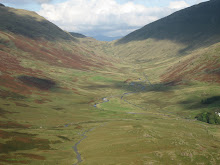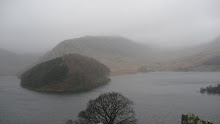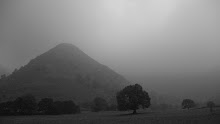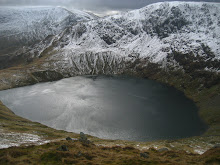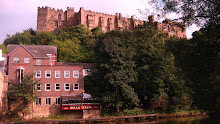



Picture 2 The Abbey and St Mary's church above Whitby
Picture 3 St Marys church on the hill and replica of Cooks ship the Endeavour
Picture 4 Whitby from St Mary's churchyard
Picture 5 Whitbt Abbey ruins
Everyone knows England's national dish is fish 'n' chips, preferably wrapped up in a newspaper and smothered in salt 'n' vinegar. The trouble is most people whom visit England from oversea's only see London and the South East of the country. Now whilst the south east has many wonderful treasures for the visitor to enjoy, it is lacking in good chip shops. I speak from experience in saying that London has some terrible chip shops in the tourist area's which leave the visitor wondering what all the fuss is about. In saying that however,if you visit Hainalt Road in Leytonstone East London there is a very nice chippy ran by a Chinese chap called Michael which I would recommend. The best chip shops in England are generally found in the north and one town with it's fair share of excellent chip shops is a small Yorkshire town situated at the mouth of the River Esk named Whitby. Whitby is a pleasant little harbour town famous for a number of things but mostly for Captain Cook whom was an English explorer, navigator and cartographer whom was the first to map Newfoundland in Canada prior to making three voyages to the Pacific Ocean during which he achieved the first European contact with the eastern coastline of Australia and the Hawaiian Islands as well as the first recorded circumnavigation of New Zealand. Also on offer in Whitby situated high above the town are the remains of it's abbey built in 657 AD and destroyed by Danish Vikings in 867 along with pleasant beaches, narrow olde English cobbled streets, great local shops and as stated earlier, fantastic chippy's.
Whitby offers the visitor more than history; its situation is superb in the middle of one of Britain’s most delightful stretches of coast, with cliffs and fine bays interspersed with picturesque fishing villages. The noble Abbey may be a beautiful ruin, but the Parish Church of St Mary, dating partly from 1110, and reached by 199 steps cut in the cliff, is still very much a part of the town.
Whitby offers the visitor more than history; its situation is superb in the middle of one of Britain’s most delightful stretches of coast, with cliffs and fine bays interspersed with picturesque fishing villages. The noble Abbey may be a beautiful ruin, but the Parish Church of St Mary, dating partly from 1110, and reached by 199 steps cut in the cliff, is still very much a part of the town.







